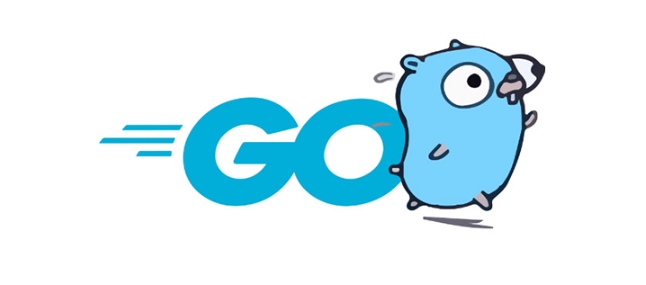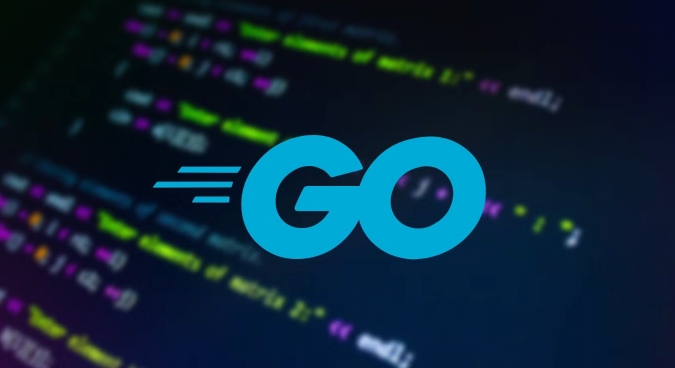 Backend Development
Backend Development
 Golang
Golang
 Strategies for Integrating Golang Services with Existing Python Infrastructure
Strategies for Integrating Golang Services with Existing Python Infrastructure
Strategies for Integrating Golang Services with Existing Python Infrastructure
Jul 02, 2025 pm 04:39 PMTo integrate Golang services with existing Python infrastructure, use REST APIs or gRPC for inter-service communication, allowing Go and Python apps to interact seamlessly through standardized protocols.1. Use REST APIs (via frameworks like Gin in Go and Flask in Python) or gRPC (with Protocol Buffers) for efficient, cross-language communication.2. Share data via a common database (e.g., PostgreSQL) or message queues (e.g., Kafka) to decouple services and enable asynchronous processing.3. Leverage Docker and containerization to ensure consistent deployment across both language environments, using Docker Compose or Kubernetes for orchestration.4. Consider embedding one language within the other (e.g., calling Go from Python via ctypes or running Python scripts in Go) only when high-performance or tight integration is required, as these methods are complex and best reserved for advanced use cases.

Integrating Golang services with an existing Python infrastructure can be a powerful way to leverage the strengths of both languages — Go for performance and concurrency, and Python for flexibility and ecosystem. The key is to treat them as complementary parts of a larger system rather than competing tools.

1. Use REST APIs or gRPC for Inter-Service Communication
One of the most straightforward ways to connect Go and Python services is through standard communication protocols like REST or gRPC.

REST APIs are widely supported in both ecosystems. You can build a Go service using frameworks like Gin or Echo and expose endpoints that your Python app (e.g., Flask or Django) calls via HTTP requests.
gRPC is another solid option, especially if you need high-performance communication. It uses Protocol Buffers for serialization, which works well across languages. Define your service interface once, generate client and server code for both Go and Python, and you're good to go.

Tips:
- Keep API contracts clear and versioned.
- Use JSON for REST unless performance is critical — it’s easier to debug.
- For gRPC, make sure both teams understand how to manage
.protofiles.
2. Share Data Through a Common Database or Message Queue
Instead of direct API calls, sometimes it makes more sense to let services communicate through shared data stores.
You can use a common database like PostgreSQL or MySQL where both Go and Python applications read from and write to. This avoids tight coupling and allows each service to process data at its own pace.
Alternatively, message queues like RabbitMQ, Kafka, or even Redis can act as the middle layer. A Python service publishes a message, and a Go service consumes it — or vice versa.
Why this helps:
- Decouples services so they don’t have to be online at the same time.
- Eases scaling since each part can grow independently.
- Reduces latency issues from synchronous calls.
3. Leverage Docker and Containerization for Consistent Deployment
Both Go and Python apps can run inside containers, making deployment much smoother when integrating across languages.
Use Docker images for each service — a Python web app in one container, a Go microservice in another. Then orchestrate them together using Docker Compose or Kubernetes.
This approach ensures that environment differences (like Python virtual environments vs Go modules) don’t cause issues during integration.
Best practices:
- Keep dependencies isolated per service.
- Reuse base images where possible to reduce overhead.
- Use environment variables for configuration, not hardcoded values.
4. Consider Embedding One Language Inside the Other (Advanced)
In some cases, you might want tighter integration — like calling Go code from Python or embedding Python scripts into a Go binary.
For Go → Python: Tools like Cgo combined with Python's C API can work, but it’s complex. More practical options include using PyGoPython or running Python scripts as subprocesses from Go.
For Python → Go: Wrapping Go code as a C shared library and calling it via ctypes in Python is possible, though not trivial.
When to consider this:
- When performance-critical sections are better written in Go.
- When legacy Python systems must directly call optimized Go functions.
These methods are advanced and should only be used when necessary. Most integrations will work fine with APIs or messaging.
That’s basically how you can bring Go services into a Python-based architecture without tearing everything down. It doesn't have to be all-or-nothing — start small, pick the integration method that fits your team and use case, and build from there.
The above is the detailed content of Strategies for Integrating Golang Services with Existing Python Infrastructure. For more information, please follow other related articles on the PHP Chinese website!

Hot AI Tools

Undress AI Tool
Undress images for free

Undresser.AI Undress
AI-powered app for creating realistic nude photos

AI Clothes Remover
Online AI tool for removing clothes from photos.

Clothoff.io
AI clothes remover

Video Face Swap
Swap faces in any video effortlessly with our completely free AI face swap tool!

Hot Article

Hot Tools

Notepad++7.3.1
Easy-to-use and free code editor

SublimeText3 Chinese version
Chinese version, very easy to use

Zend Studio 13.0.1
Powerful PHP integrated development environment

Dreamweaver CS6
Visual web development tools

SublimeText3 Mac version
God-level code editing software (SublimeText3)

Hot Topics
 Polymorphism in python classes
Jul 05, 2025 am 02:58 AM
Polymorphism in python classes
Jul 05, 2025 am 02:58 AM
Polymorphism is a core concept in Python object-oriented programming, referring to "one interface, multiple implementations", allowing for unified processing of different types of objects. 1. Polymorphism is implemented through method rewriting. Subclasses can redefine parent class methods. For example, the spoke() method of Animal class has different implementations in Dog and Cat subclasses. 2. The practical uses of polymorphism include simplifying the code structure and enhancing scalability, such as calling the draw() method uniformly in the graphical drawing program, or handling the common behavior of different characters in game development. 3. Python implementation polymorphism needs to satisfy: the parent class defines a method, and the child class overrides the method, but does not require inheritance of the same parent class. As long as the object implements the same method, this is called the "duck type". 4. Things to note include the maintenance
 2025 quantitative trading skills: Python's automatic brick-moving strategy, making a daily profit of 5% as stable as a dog!
Jul 03, 2025 am 10:27 AM
2025 quantitative trading skills: Python's automatic brick-moving strategy, making a daily profit of 5% as stable as a dog!
Jul 03, 2025 am 10:27 AM
The digital asset market attracts global attention with its high volatility. In this environment, how to steadily capture returns has become the goal pursued by countless participants. Quantitative trading, with its dependence on data and algorithm-driven characteristics, is becoming a powerful tool to deal with market challenges. Especially in 2025, this time node full of infinite possibilities is combined with the powerful programming language Python to build an automated "brick-moving" strategy, that is, to use the tiny price spreads between different trading platforms for arbitrage, which is considered a potential way to achieve efficient and stable profits.
 Python `@classmethod` decorator explained
Jul 04, 2025 am 03:26 AM
Python `@classmethod` decorator explained
Jul 04, 2025 am 03:26 AM
A class method is a method defined in Python through the @classmethod decorator. Its first parameter is the class itself (cls), which is used to access or modify the class state. It can be called through a class or instance, which affects the entire class rather than a specific instance; for example, in the Person class, the show_count() method counts the number of objects created; when defining a class method, you need to use the @classmethod decorator and name the first parameter cls, such as the change_var(new_value) method to modify class variables; the class method is different from the instance method (self parameter) and static method (no automatic parameters), and is suitable for factory methods, alternative constructors, and management of class variables. Common uses include:
 Understanding the Performance Differences Between Golang and Python for Web APIs
Jul 03, 2025 am 02:40 AM
Understanding the Performance Differences Between Golang and Python for Web APIs
Jul 03, 2025 am 02:40 AM
Golangofferssuperiorperformance,nativeconcurrencyviagoroutines,andefficientresourceusage,makingitidealforhigh-traffic,low-latencyAPIs;2.Python,whileslowerduetointerpretationandtheGIL,provideseasierdevelopment,arichecosystem,andisbettersuitedforI/O-bo
 Python Function Arguments and Parameters
Jul 04, 2025 am 03:26 AM
Python Function Arguments and Parameters
Jul 04, 2025 am 03:26 AM
Parameters are placeholders when defining a function, while arguments are specific values ??passed in when calling. 1. Position parameters need to be passed in order, and incorrect order will lead to errors in the result; 2. Keyword parameters are specified by parameter names, which can change the order and improve readability; 3. Default parameter values ??are assigned when defined to avoid duplicate code, but variable objects should be avoided as default values; 4. args and *kwargs can handle uncertain number of parameters and are suitable for general interfaces or decorators, but should be used with caution to maintain readability.
 Strategies for Integrating Golang Services with Existing Python Infrastructure
Jul 02, 2025 pm 04:39 PM
Strategies for Integrating Golang Services with Existing Python Infrastructure
Jul 02, 2025 pm 04:39 PM
TointegrateGolangserviceswithexistingPythoninfrastructure,useRESTAPIsorgRPCforinter-servicecommunication,allowingGoandPythonappstointeractseamlesslythroughstandardizedprotocols.1.UseRESTAPIs(viaframeworkslikeGininGoandFlaskinPython)orgRPC(withProtoco
 Describe Python garbage collection in Python.
Jul 03, 2025 am 02:07 AM
Describe Python garbage collection in Python.
Jul 03, 2025 am 02:07 AM
Python's garbage collection mechanism automatically manages memory through reference counting and periodic garbage collection. Its core method is reference counting, which immediately releases memory when the number of references of an object is zero; but it cannot handle circular references, so a garbage collection module (gc) is introduced to detect and clean the loop. Garbage collection is usually triggered when the reference count decreases during program operation, the allocation and release difference exceeds the threshold, or when gc.collect() is called manually. Users can turn off automatic recycling through gc.disable(), manually execute gc.collect(), and adjust thresholds to achieve control through gc.set_threshold(). Not all objects participate in loop recycling. If objects that do not contain references are processed by reference counting, it is built-in
 Explain Python generators and iterators.
Jul 05, 2025 am 02:55 AM
Explain Python generators and iterators.
Jul 05, 2025 am 02:55 AM
Iterators are objects that implement __iter__() and __next__() methods. The generator is a simplified version of iterators, which automatically implement these methods through the yield keyword. 1. The iterator returns an element every time he calls next() and throws a StopIteration exception when there are no more elements. 2. The generator uses function definition to generate data on demand, saving memory and supporting infinite sequences. 3. Use iterators when processing existing sets, use a generator when dynamically generating big data or lazy evaluation, such as loading line by line when reading large files. Note: Iterable objects such as lists are not iterators. They need to be recreated after the iterator reaches its end, and the generator can only traverse it once.





